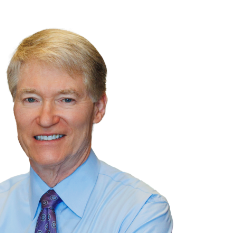 Breast augmentation is one of the most popular cosmetic procedures in the U.S., but it’s important to become informed before undergoing surgery. Unfortunately, there are many misconceptions about breast augmentation and how it may affect you.
Breast augmentation is one of the most popular cosmetic procedures in the U.S., but it’s important to become informed before undergoing surgery. Unfortunately, there are many misconceptions about breast augmentation and how it may affect you.
Explore some of the most common misconceptions about breast augmentation, so you can make an educated decision that is right for you.
Understanding the Limits of Breast Augmentation
Breast augmentation aims to increase breast size by placing a breast implant directly underneath the existing breast tissue or under the chest muscles.
While a desire for larger breasts is the most common reason for this surgery, many women choose to get breast implants after pregnancy and breastfeeding, after losing a significant amount of weight, or to correct uneven breasts.
Breast implants are an FDA-approved, effective way to meet these aesthetic goals. You can expect a fuller, more contoured, and more even look after your breast implant surgery.
However, there are some things that a breast augmentation may not correct. Two of the most common misconceptions involve nipple-areola positioning and cleavage.
Nipple-Areola Positioning
Asymmetrical or large areolas are a concern for some women.
Areolas are the pigmented areas that surround your nipples. They are functional parts of the anatomy and contain the Montgomery glands, which provide moisture to the nipple. This function is essential during breastfeeding. Areolas connect to the breast through a delicate web of nerves and blood vessels.
If a patient’s areolas are uneven or off-center before breast implants, they will remain so after surgery. However, there are ways to improve this. A breast lift will reshape and reposition the nipple-areola complex so that the two sides appear more even and centered. It can also correct drooping nipples and breasts by lifting them to a normal position.
If you are concerned about nipple-areola positioning, speak with Dr. Sanders about including a breast lift with your surgery.
Appearance of Cleavage
A second misconception about breast implant surgery is that it will always give the patient a fuller, more defined cleavage.
The appearance of cleavage depends in part on the shape, volume, and projection of the breast implant. However, some patients’ natural anatomy may prevent them from having the shapely cleavage they are hoping for with breast augmentation surgery. Patients with a wide sternum may have a significant space between their breasts, and even large implants may not fill that space.
Surgery cannot narrow the chest and move the breasts closer together. However, breast revision surgery may allow the surgeon to partially release the pectoralis muscle and move the implants closer to the midline of the chest, improving the amount of cleavage. It is important to remember, however, that the pectoralis muscle does not originate from the center of the chest. It starts at least 1/2 inch to the side, limiting how close to the midline the implant may be placed if it is beneath the muscle.
Fat grafting may also be done over the inner aspect of the breast to produce more cleavage.
Skin laxity may also need to be addressed if one desires more cleavage. With time, skin loses the elastin and collagen needed to maintain its youthful firmness. Skin laxity of the breast allows the breasts to sag and the implants to fall to the side, with a resultant loss of cleavage.
If you have lax or excess breast tissue, breast implants alone may not be enough to create the aesthetic you are hoping for. Breast augmentation with a breast lift is the best option for most women with significant skin laxity.
Do You Have Questions About Breast Implant Surgery?
There is a reason breast implant surgery is one of the most commonly performed cosmetic surgeries. When performed by a skilled surgeon, the procedure can provide appealing, long-lasting results. However, patients need to understand that breast implants alone are not a solution for every case.
Dr. George Sanders is a board-certified plastic surgeon with the knowledge and experience needed to create natural-looking, well-contoured breasts. During a consultation, Dr. Sanders will explain the limits and benefits of breast implants as well as explore other options that may help you get your desired results.





